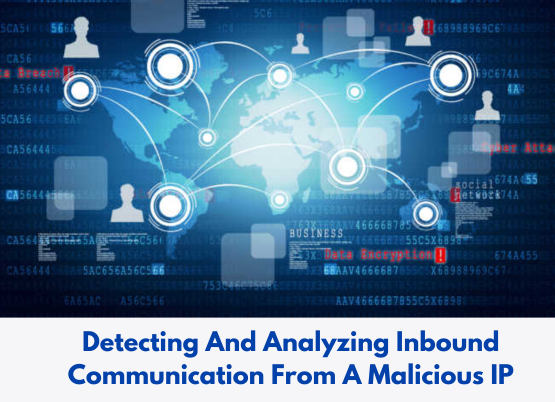
Detecting and Analyzing Inbound Communication from a Malicious IP
Incident Alert:
Detecting and Analyzing Inbound Communication from a Malicious IPMalicious IP:
86.127.235.* - This IP was reported 24 times. Confidence of Abuse is 59%.Incident Summary:
In this case study, we delve into an incident involving inbound communication from a malicious IP address, specifically 86.127.235.*The following details outline the nature of the incident:
1) Our observations have revealed a significant volume of traffic originating from the aforementioned malicious IP address.2) This particular IP has been reported as suspicious on 24 separate occasions, indicating a high likelihood of abuse. The confidence level for this assessment stands at 59%.
3) The malicious IP has been implicated in various unauthorized activities, including Distributed Denial of Service (DDoS) attacks, port probing on unauthorized port 993, unauthorized IMAP connection attempts, Web Form Spam (Montosier botnet) attributed to XVII century's Nicholas Jarry, brute force attacks, and Web Application Attacks, among others.
4) Through a thorough examination of this incident, we aim to gain valuable insights into the tactics, techniques, and intentions behind the inbound communication from the identified malicious IP.
Analysis:
This case study focuses on the examination of traffic originating from IP address 86.127.235.8.
The following details provide valuable insights into the incident:
1) IP Details:
IP: 86.127.235.8
ISP: Digi Spain Telecom S.L.U.
Location: Alcobendas, Madrid, Comunidad de, Spain
Reverse DNS Lookup: 86-127-235-8.digimobil.es
2) Blacklist Check Results:
• The IP address has been flagged by various blacklist checkers.
• It has been reported a total of 24 times from 17 different sources.
• Blacklist checks include Virus Total, AbuseIPDB, IPVoid, Blacklist Master (RBL Database), Metadefender, and more.
3) Blacklist Sites:
The IP address has been reported on multiple blacklist sites, including but not limited to:
• cbl.abuseat.org
• black.mail.abusix.zone
• exploit.mail.abusix.zone
• truncate.gbudb.net
• InvaluementSIP
• hostkarma.junkemailfilter.com
• all.s5h.net
• bl.spamcop.net
• pbl.spamhaus.org
• xbl.spamhaus.org
• zen.spamhaus.org
4) Virus Total:
Out of 89 security vendors, one flagged the URL associated with the IP address as malicious.
5) Blacklist Master:
The IP address is listed in 12 instances according to Blacklist Master.
6) Meta Defender:
Three threats, categorized as spam and high-risk, have been detected on this IP address according to Meta Defender.
By thoroughly analyzing the traffic from IP address 86.127.235.8 and considering the reported blacklist checks, this case study aims to gain a deeper understanding of the potential risks and associated implications of the observed communication.
Recommendation:
Activity Assessment: Analyzing and Responding to Traffic from a Bad IP Address
Upon discovering traffic originating from a potentially malicious IP address, it is crucial to evaluate the relevance of this IP to your business. Consider the following steps to effectively handle the situation:1. IP Relevance:
Determine whether the identified IP address belongs to your business or is associated with any authorized activity. Review your records and network infrastructure to validate its relevance.
2. Blocking the IP Address:
If the IP address is confirmed as malicious or irrelevant to your business, promptly employ firewalls or security devices to block any communication with that IP. This action mitigates further potential issues and protects your network.
3. Monitoring and Logging:
Establish systems to monitor and log suspicious activities. This enables you to gather evidence, identify patterns, and improve your understanding of potential future attacks.
4. Traffic Analysis:
Investigate the specific attacks or vulnerabilities targeted by the bad IP address. This analysis empowers you to enhance your response and implement appropriate countermeasures.
5. Security Measures Update:
Ensure that all security measures, including firewalls and antivirus software, are up to date. Regularly patch your software and systems to address any known vulnerabilities, bolstering your defenses against potential threats.
6. Information Sharing:
Report the identified bad IP address to relevant authorities and cybersecurity organizations. By sharing this information, you contribute to safeguarding others and collectively combatting cyber threats.
7. Authentication Enhancement:
Strengthen your authentication practices by utilizing robust passwords and considering additional security layers, such as two-factor authentication. Implementing these measures fortifies your defense against unauthorized access attempts.

